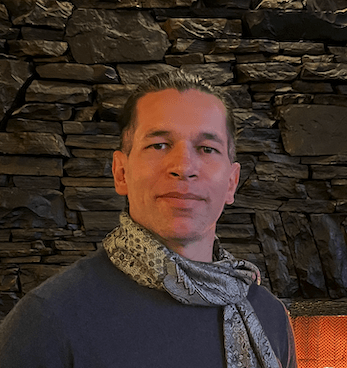
Psychosomatic diseases are physical symptoms caused or worsened by emotional stress, where the mind influences body health through hormone release and immune system changes, highlighting the vital connection between mental and physical well-being supported by extensive research.
Ever wonder if your mind could be behind your aches? Psychosomatic diseases reveal the powerful link between your thoughts, emotions, and physical health. In my experience, this connection is like a roadmap to healing if you know how to read it. Let’s dive into how your body talks and what it might be trying to teach you.
understanding the body-mind connection
Ever get a stomachache right before a big presentation? That’s your body-mind connection at work. It’s no secret our thoughts and feelings can stir physical reactions — sometimes subtle, sometimes loud.
Think of the body and mind as two dancers. When they’re in sync, things feel pretty smooth. But when they’re out of step, your body might send you warning signs.
Here’s what that means in real life:
- Stress often spices up headaches or muscle tension, not just emotional upset.
- Chronic pain can sometimes stem from long-held emotional distress.
- Your immune system? It’s got a backstage pass to your mental state — mood swings can lower your defenses.
Pretty wild, right? It’s like your brain is texting your body — just sometimes the messages get garbled. When you ignore those signals, you might end up with “psychosomatic illnesses,” physical symptoms caused or worsened by your mental state.
You know that feeling when a deep breath or mindfulness practice can ease your tension? That’s the connection working positively. The good news: tuning into what your body tells you helps catch problems before they spiral.
Try this simple check-in: pause, and ask yourself what emotion might be behind that ache or tiredness. It’s like giving your body a voice at last, and it’s worth listening.
how emotions contribute to illness
Ever wonder why you feel physically worn out after a stressful day? Emotions contribute to illness more than most people realize. It’s not just in your head — your feelings actually affect your body’s health.
Think about anger or sadness as heavy backpacks you carry around. Over time, that weight can cause real wear and tear, like constant pressure on your shoulders.
Here’s how emotions can tip the scales:
- Chronic stress floods your body with hormones like cortisol, which can weaken your immune system.
- Anxiety often causes physical symptoms like muscle tightness, headaches, or stomach issues.
- Depression is linked with inflammation, which plays a role in many chronic diseases.
Heck, it’s like your emotions throw a party, but your body pays the cleanup bill.
According to a 2020 study by the American Psychological Association, people with long-term emotional distress had a 35% higher risk of developing heart disease. Pretty eye-opening, right?
So, what can you do? Start by recognizing and naming your feelings — it’s like taking off that heavy backpack for a minute. Simple steps like journaling, talking it out, or guided breathing can lighten the load and protect your body.
transforming beliefs for healing
Did you know your beliefs can either block or boost your healing journey? Transforming beliefs for healing is like unlocking a door that’s been stuck for years.
We all carry stories about ourselves and the world that shape how we respond to pain or illness. Some of these beliefs might be, well, outdated or even harmful.
Here’s how you can start flipping the script:
- Identify limiting beliefs. Maybe you think, “I’ll never get better,” or “My pain defines me.” Recognizing these is step one.
- Challenge them — ask yourself, “Is this really true? What’s the evidence?”
- Replace negative thoughts with empowering ones, like “I am capable of healing” or “My body wants to get well.”
It’s like reprogramming your inner GPS so it points you toward wellness instead of despair. Heck, it takes practice, but each small change builds momentum.
Studies show that cognitive shifts can reduce stress hormones and improve immune responses — basically helping your body fight back better.
Try this: write down one belief that’s holding you back right now. Then, counter it with a positive statement. Repeat daily, like giving your brain a gentle nudge toward hope.
Wrapping up
Psychosomatic diseases remind us how closely our mind and body work together. Your feelings and beliefs can really shape your health in surprising ways.
It’s okay to take small pauses and listen to what your body’s telling you. Changing how you think about pain or illness can open new doors to healing.
Remember, healing is a journey, not a race. Hey, it’s okay to not have all the answers—sometimes just noticing your thoughts and feelings is a great first step.
FAQ — your questions about psychosomatic diseases answered
What exactly are psychosomatic diseases?
They’re physical symptoms caused or worsened by emotional or mental stress rather than direct physical causes.
How do emotions actually affect my body?
Emotions like stress release hormones that can weaken your immune system and cause physical symptoms over time.
Can changing my thoughts really help me heal?
Yes, shifting your beliefs can reduce stress and support your body’s natural healing processes according to psychological studies.
Is it common for stress to cause real health problems?
Definitely. Chronic stress is linked to issues like headaches, heart disease, and digestive problems in many people.
Should I seek professional help for psychosomatic symptoms?
If symptoms persist or interfere with life, a healthcare provider can help explore both physical and emotional causes.
What’s a simple way to start managing psychosomatic symptoms?
Try mindfulness or journaling to notice your feelings and how they affect your body — even small steps make a difference.

A certified Heal Your Life® Coach with 20+ years in education and emotional development. Supports gifted teens in navigating anxiety, perfectionism, and identity challenges, while equipping parents with practical tools for lasting transformation. Sessions blend emotional healing, mindset mastery, and strategic empowerment.



